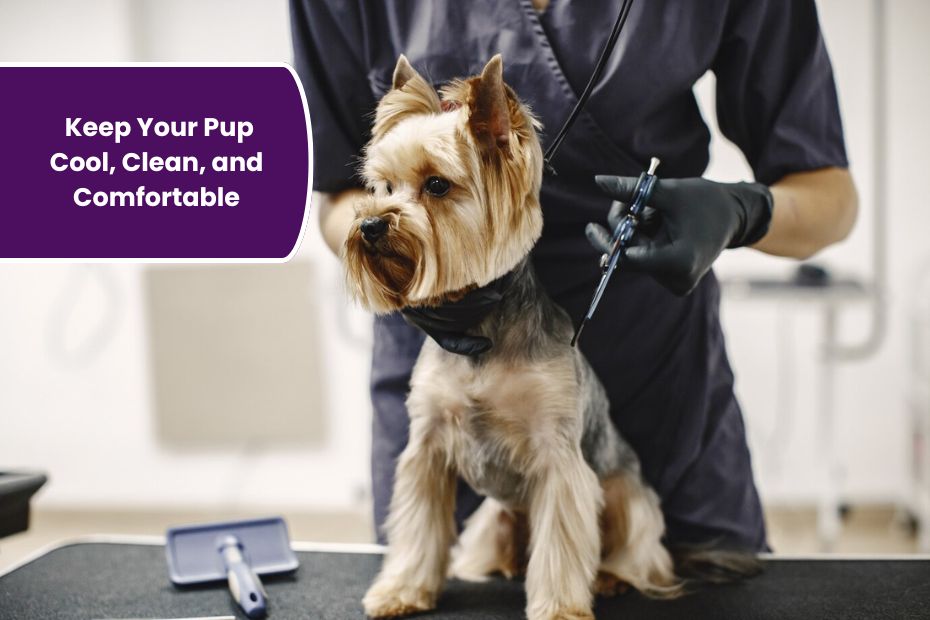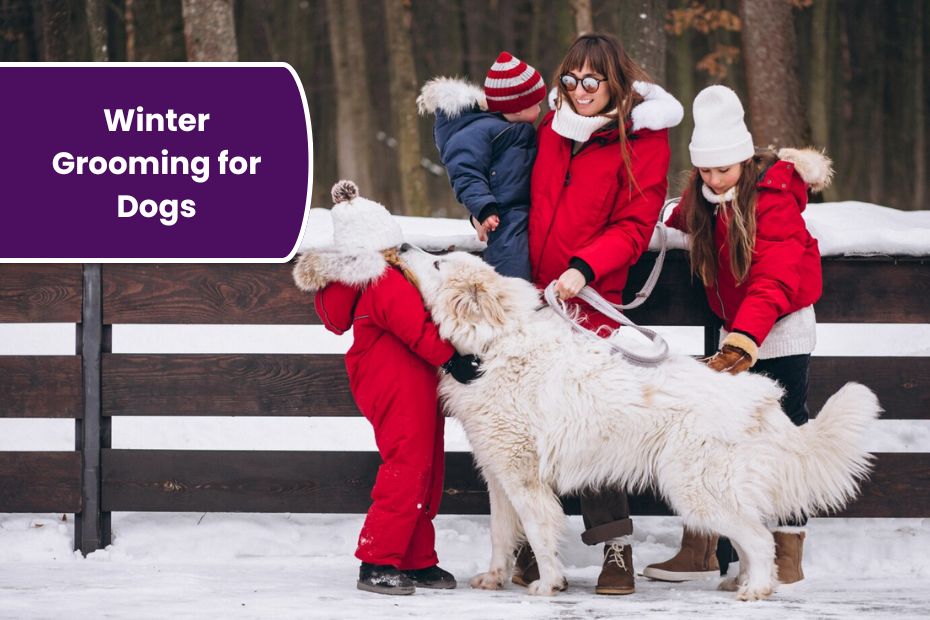Pet owners understand that a shining, clean coat reflects a pet’s general health and contentment rather than only their outward appearance. Maintaining the fur on your fluffy dog, sleek cat, or fuzzy rabbit may be both a gratifying yet difficult chore. Apart from appearance, a well-kept pet feels secure and comfortable.
To get that lustrous, head-turning fur in 2025, pet grooming trends stress natural materials, cutting-edge technologies, and holistic treatment. This page delves deeply into professional advice, popular grooming methods, and ways to keep your pet’s coat in best shape. From nutritional changes to brushing schedules, we have created a thorough guide to guarantee your pet’s fur remains beautiful, crisp, and glossy.
Why a Shiny Coat Matters for Your Pet’s Health
More than just looks, a lustrous coat provides a window into the welfare of your pet. Healthy fur suggests appropriate diet, decent grooming practices, and absence of underlying medical problems. Dull, matted, or flaky fur might indicate malnutrition, stress, or skin diseases including dermatitis. Dogs with poor coat condition, for example, can lack zinc or biotin, while cats might shed excessively from stress. Grooming also promotes blood flow by spreading natural oils that boost shine.
Ignoring fur maintenance can result in matting, which collects dirt and causes pain, or in severe cases even diseases. Pet owners are growing more conscious of these relationships in 2025; many are using holistic methods such herbal shampoos and supplements. Giving coat health top priority not only makes your pet look good but also guarantees their comfort and lifespan. Regular veterinarian visits can help identify early symptoms of coat-related problems, hence proactive treatment is quite important.
Essential Grooming Tools for a Glossy Coat
A bright, clean coat depends much on the appropriate instruments. Grooming technology has changed in 2025; pet owners now find creative brushes, combs, and deshedding gadgets fashionable. Perfect for long-haired breeds, a slicker brush softly eliminates knots and loose fur; a bristle brush gives short-haired dogs gloss. Grooming gloves change everything for cats since they let you pet and untangle at once.
Because of their mild cleaning qualities, high-quality pet shampoos in uding natural components like oatmeal or aloe vera are also quite sought for. For tough knots, use a detangling spray; for fast drying, get a microfiber towel. When applied properly, these instruments help to produce a glossy finish and stop skin discomfort. If unsure, always use tools appropriate for your pet’s coat type and see a groomer for suggestions.
Step-by-Step Grooming Routine for Clean Fur
A consistent grooming routine is key to maintaining clean, shiny fur. Start by brushing your pet daily or at least three times a week, depending on their coat length. This removes dirt, prevents matting, and distributes natural oils. Use a slicker brush for long-haired pets or a grooming glove for short-haired ones. Next, bathe your pet every 4-6 weeks using a pet-safe shampoo—overbathing can strip oils, causing dryness.
Recent trends emphasize tear-free, hypoallergenic shampoos with coconut or chamomile extracts. Rinse thoroughly to avoid residue, which can dull the coat. After bathing, apply a conditioner designed for pets to enhance softness and shine. Dry gently with a microfiber towel or a low-heat pet dryer to avoid frizz. Finish with a final brush to smooth the fur. For cats, incorporate a lint roller to pick up loose hairs post-grooming.
Dietary Tips for a Vibrant Pet Coat
A glossy coat depends much on nutrition. Found in fish oil or flaxseed, a diet high in omega-3 and omega-6 fatty acids encourages lustrous fur and good skin. Protein is also vital; good sources like chicken or turkey promote hair growth and repair. Often available in fortified pet meals, vitamins including biotin and zinc fight dullness and shedding.
Another consideration is hydration; make sure your pet always has fresh water available to preserve skin suppleness. Pet supplements with coat-boosting properties like collagen chews or probiotic powders are hot in 2025. Table leftovers should not be given since they upset the food balance and could cause skin problems. See your veterinarian to create a nutrition plan catered to your pet’s requirements, particularly in light of allergies or sensitivity. A well-fed pet is more likely to have a brilliant, head-turning coat.
Trending Natural Products for Pet Fur Care in 2025
Driven by demand for safe, environmentally friendly solutions, natural grooming products are taking front stage in pet care in 2025. Pet shampoos praised for calming skin and providing shine without harsh chemicals include ones containing aloe vera, oats, and tea tree oil. For dry or brittle fur especially, coconut oil-based conditioners are a favorite for their hydrating qualities.
Herbal sprays with lavender or chamomile are also well-liked for their subdued gloss and relaxing properties. For dogs with sensitive skin, hypoallergenic products free of parabens and sulfates are advised. Sustainable packaging and mild formulations of brands like Burt’s Bees for Pets and Earthbath have them trending.
To prevent allergic reactions, always patch-test newly introduced products; for safety, select products approved by veterinary dermatologists. These natural remedies guarantee your pet’s fur stays clean and brilliant and fit the holistic pet care philosophy.
Common Coat Problems and How to Address Them
Pets might have coat problems including dullness, too much shedding, or matting even with careful attention. Dull fur usually results from inadequate nutrition or dehydration; so, be sure to have a balanced diet and enough of water. Common in breeds including Huskies, excessive shedding can be controlled with frequent deshedding and omega-3 supplements. Frequent in long-haired dogs, matting calls for meticulous detangling with a slicker brush or professional grooming if extreme.
Another offender is fleas, which cause itching and patchy fur; use vet-approved flea medications and routinely wash bedding. Often worse in winter, dry skin benefits from humidifiers and hydrating sprays. Always keep an eye on your pet for behavioral changes; stress can aggravate coat issues. Wearable pet health monitors will be used in 2025 to early skin condition tracking. Taking quick care of these problems maintains the fur of your pet clean and shining.
Table: Grooming Frequency by Pet Breed
| Breed | Coat Type | Brushing Frequency | Bathing Frequency | Professional Grooming |
|---|---|---|---|---|
| Labrador Retriever | Short, dense | 2-3 times/week | Every 6-8 weeks | Optional, every 3 months |
| Persian Cat | Long, thick | Daily | Every 4-6 weeks | Every 6-8 weeks |
| Poodle | Curly, dense | Daily | Every 4-6 weeks | Every 4-6 weeks |
| German Shepherd | Medium, double coat | 3-4 times/week | Every 6-8 weeks | Optional, every 2 months |
| Sphynx Cat | Hairless | Weekly (skin wipe) | Every 2-4 weeks | Rarely needed |
This table outlines grooming needs for popular breeds, based on coat type and expert recommendations. Adjust frequency based on your pet’s lifestyle and environment.
Seasonal Grooming Tips for Year-Round Shine
Seasons influence your pet’s coat and call for specific care techniques. Shedding rises in spring; so, boost brushing to control loose fur; here, deshedding equipment are quite helpful. Summer calls for minimal grooming to avoid overheating; use eucalyptus or peppermint-based cooling shampoos Fall brings heavier coats; therefore, concentrate on detangling and conditioning to get ready for winter. Dry air can lead to flakiness in winter; use humidifiers and moisturizing sprays to help.
Rinsing paws after walks will help year-round prevent outdoor pets from environmental trash such pollen or mud. In 2025, pet sunscreen with thin coats is also becoming popular in order to guard UV harm. Seasonally, change bathing frequency; less in winter to protect oils, more in summer to eliminate sweat. In warmer months, find ticks and fleas more often. Aligning grooming with seasonal changes guarantees that your pet’s fur stays comfy, clean, and shining no matter the temperature.
When to Seek Professional Grooming Services
While home grooming is effective, professional services are sometimes necessary for optimal coat care. Breeds like Poodles or Persian cats, with complex coats, benefit from expert trimming and dematting every 4-8 weeks. Professional groomers use advanced tools, like high-velocity dryers, to achieve a polished, shiny finish.
Seek professional help if you notice persistent matting, skin redness, or unusual odors, as these may indicate underlying issues. Groomers can also recommend breed-specific products and techniques. Choose a certified groomer with positive reviews and a clean facility. Regular professional sessions, combined with home care, ensure your pet’s fur stays in top shape. For anxious pets, look for groomers trained in low-stress handling to make the experience pleasant.
Conclusion: A Shiny Coat, A Happy Pet
A labor of love that pays off in your pet’s health and happiness is keeping their fur neat and shining. Regular grooming, a nutrient-dense food, and trendy natural treatments all together will produce a coat that is lovely, crisp, and brilliant. From seasonal changes to early coat issues, keep attentive to the needs of your pet.
Supported by 2025 trends and professional guidance, the tools, methods, and insights in this book enable you to simplify fur care. Consistency is important whether you see a professional groomer or brush at home. A shiny coat not only makes your pet more confident but also strengthens your relationship by means of care and attention. Start using these ideas right now, and see how brilliantly your pet will look.
FAQs
How often should I brush my pet’s fur?
Brushing frequency depends on coat type. Long-haired pets like Persian cats need daily brushing, while short-haired breeds like Labradors require 2-3 sessions weekly. Regular brushing prevents matting and enhances shine.
Can human shampoo be used on pets?
No, human shampoos are too harsh for pets and can disrupt their skin’s pH balance. Use pet-safe shampoos with natural ingredients like oatmeal or aloe vera for gentle cleansing.
What foods improve my pet’s coat shine?
Foods rich in omega-3 fatty acids (e.g., salmon), high-quality proteins (e.g., chicken), and vitamins like biotin and zinc promote a shiny coat. Supplements like fish oil can also help.
How do I know if my pet needs professional grooming?
If your pet has persistent matting, skin issues, or requires breed-specific cuts (e.g., Poodles), professional grooming is recommended every 4-8 weeks for optimal coat health.
| Home Page | Click Here |
| Dog Grooming | Click Here |


